Tested: Is Joomla Good For SEO In 2021? – SEO News
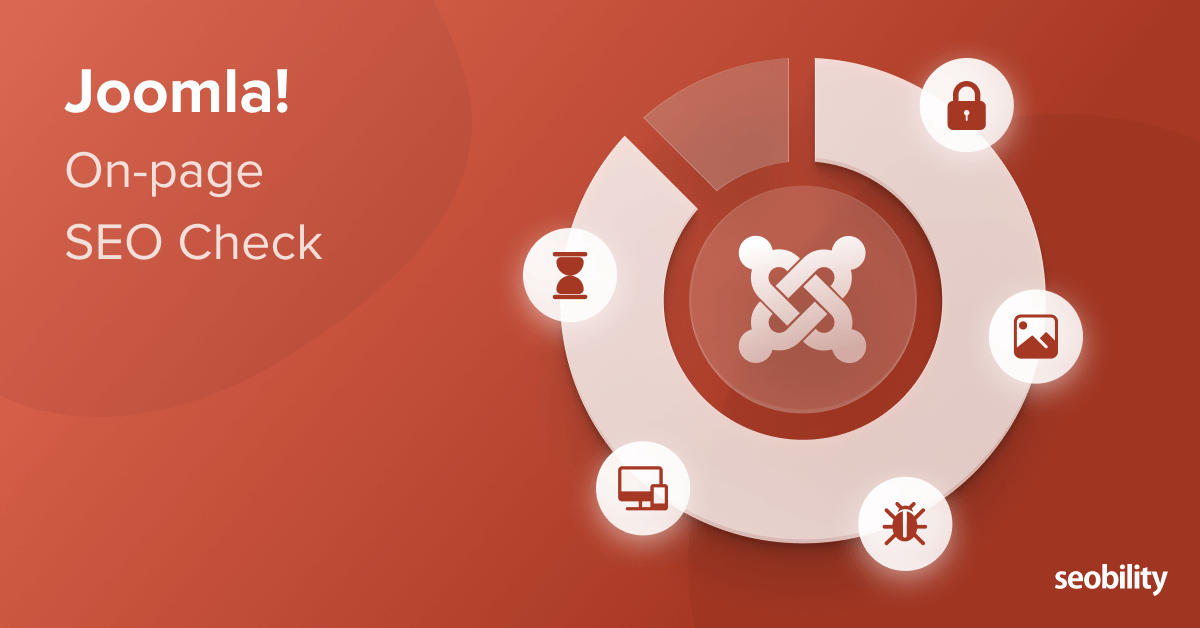
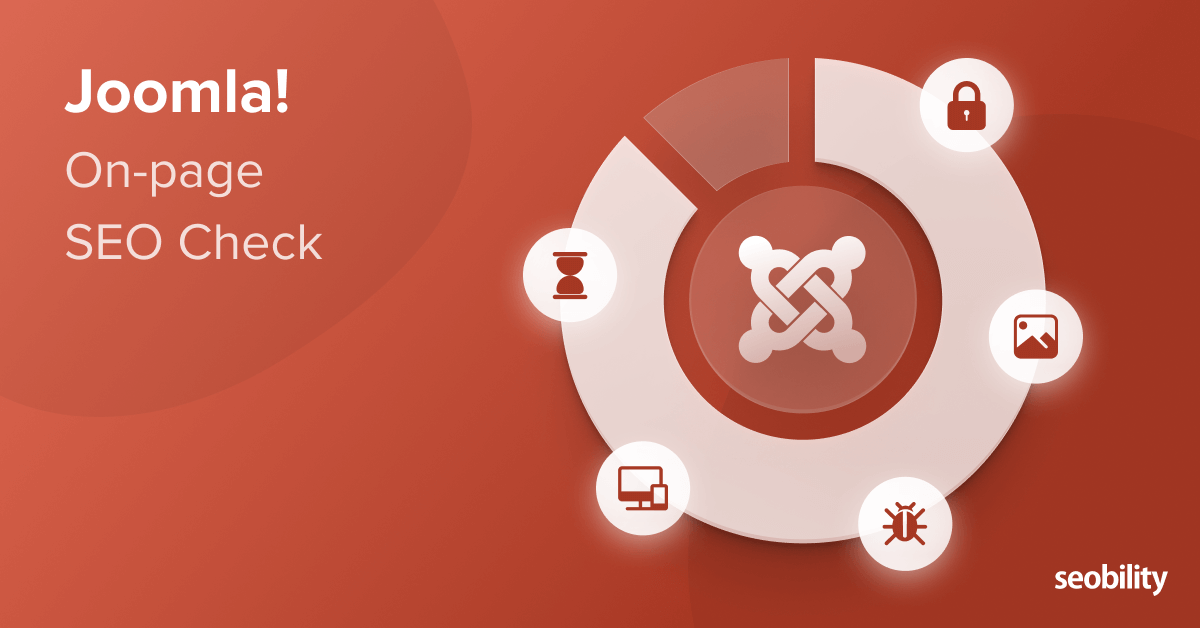
This is the fifth post in our series where we test the on-page SEO of the world’s most popular CMS systems.
We previously covered WordPress, Wix, Squarespace, and GoDaddy.
And this week we’re turning our attention to Joomla.
Disclaimer: The tests in this article are based on Joomla 3. They were performed shortly before the very recent release of Joomla 4. The Joomla 4 changelog states, that it includes SEO improvements. Hence, the results might already be outdated. We’ll follow up with an update.
That said, read on to discover:
- how well setup for on-page SEO Joomla (Joomla 3) is out of the box,
- how you can configure your Joomla site to rank higher in Google
Let’s get started with a summary.
In Summary: Is Joomla good for SEO?
Joomla is an open source CMS. You’ve got full access to the underlying code, and can also create your own plugins/extensions to modify the system’s core functionality.

So with some coding chops (and the luxury of time) we would wager that there’s nothing you can’t do to fully SEO optimize your Joomla site.
But with that being said, in this series, we’re focusing on the out-the-box SEO functionality of the major CMS systems. Give or take a few plugins/extensions, we want to keep our hands (and website) reasonably clean.
The good news?
Joomla does tick most of the on-page SEO boxes. You’ll need at least one extension. But that’s no different to WordPress, where you’ll have to install an SEO plugin like YOAST to fully optimize your site.
So what’s the bad news?
Well, Joomla’s SEO extensions are just not in the same ballpark as their WordPress counterparts (although that may soon change – see “Which Joomla SEO extensions did we try?” below).
You can control most of the elements you need to control. But the process is comparatively unintuitive and cumbersome. Everything is just going to take you longer to optimize than it would on a WordPress site.
And generally, that’s the feeling we have with Joomla as a CMS. While the front end is fine, the back end feels dated, tired — almost like an abandoned project (although it’s not).
According to W3Techs, Joomla still has a 3% CMS market share. But we suspect that market share is mainly made up of legacy sites, as a quick glance at Google Trends shows us Joomla’s popularity has been on a serious decline for at least the past 10 years.
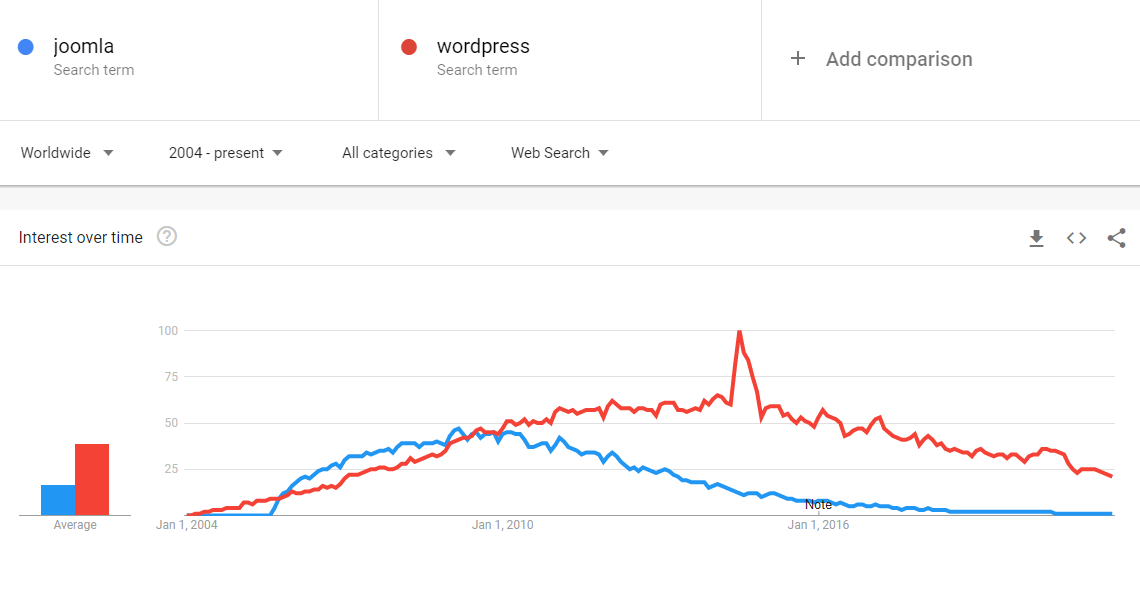
But let’s circle back round to the question at hand:
Is Joomla good for SEO? Yes.
Although you might lose a little bit of hair while optimizing your site.
And when you’re done, you’ll probably ask yourself why you didn’t just choose WordPress like everyone else has since 2010….
Before moving on with some detail, here’s a quick summary of what you can and can’t do with Joomla.

How we tested Joomla for SEO optimization
Like WordPress, it’s difficult to test Joomla in isolation as much of its SEO performance will be down to individual configurations (i.e. host/server) and choices (templates/extensions).
But as with our previous tests, we tried to keep extensions/plugins to a minimum, configuration to as close to “out the box” as possible, and opted for popular templates.
Here’s what we did:
- We set up a small test site on a Digital Ocean server with the same specs as the server hosting our previous WordPress test site
- We added demo content similar to our other test sites
- We tried out 3 Joomla SEO extensions (and settled on one)
- We tested 2 of the most popular Joomla themes (Helix Ultimate, and the default Protostar)
- Tests included manual review, running the site through our own SEO audit tool, and testing using third party tools such as Google’s PageSpeed Insights and GTMetrix.
Which Joomla SEO extensions did we try?
Choosing an SEO extension for our Joomla test site was tougher than we expected. Why? Because there’s no real community consensus on what the current best extension actually is.
Additionally, while our preference would have been to use a free SEO extension, we found that it was only premium extensions that gave us anywhere near the level of SEO control we were looking for.(and there was another, very recent fly in the ointment that we’ll cover below)
So in the end, we purchased and tried out the three extensions below:
The most promising was/is 4SEO, which is made by the same people who make sh404sef.
It’s a relatively new extension that’s as close as you’ll get to a WordPress SEO plugin like YOAST for Joomla. There’s decent snippet previews and you can control most on-page SEO elements:
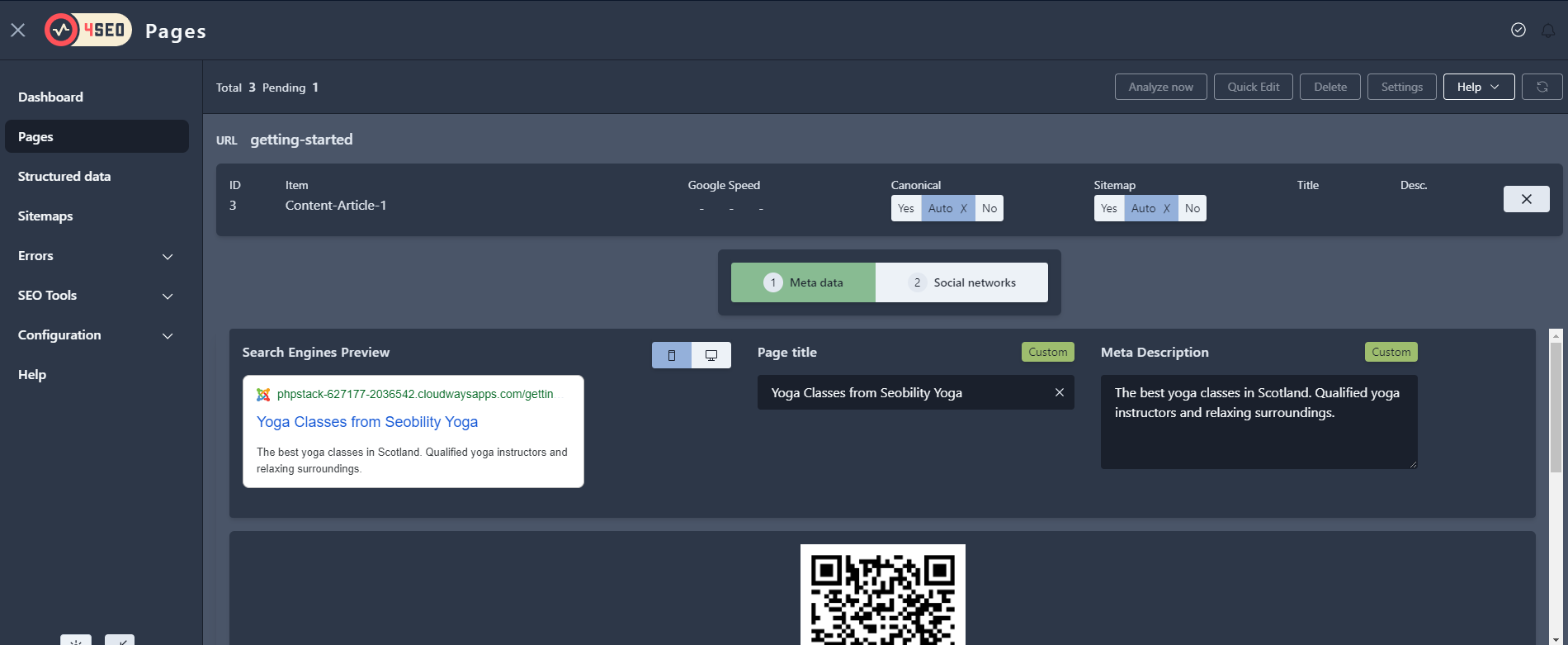
But as promising as it looks, unfortunately we found it a little buggy to recommend at this stage. We’ll be keeping an eye on it though, and suspect it will be our Joomla SEO extension of choice when we come to update this article.
Route66 from Firecoders also looks the part (with some nice on-page analysis reports), but was lacking some of the basics.
So in the end we settled on sh404sef, which has most of the functionality we’re looking for and has long been one of the most popular Joomla SEO extensions.
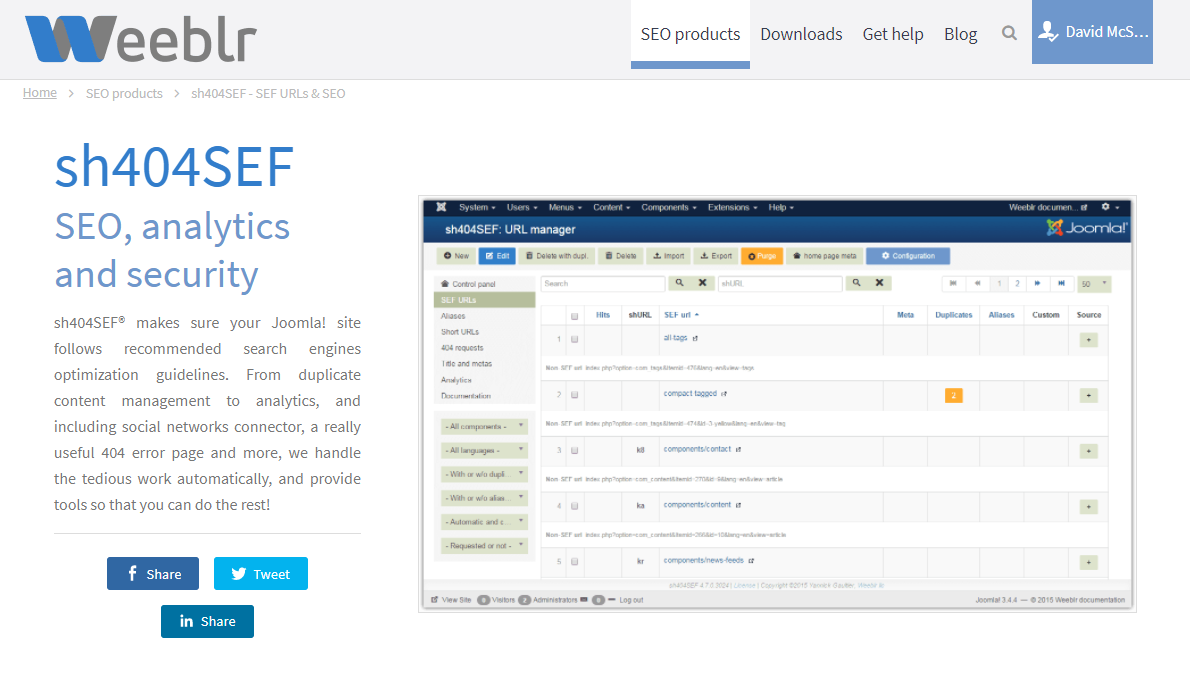
And it’s sh404SEF we’ll be using in our examples below.
But there’s a problem:
Weeblr (the company behind sh404SEF) recently announced that the extension may not be compatible with Joomla 4 and will no longer be updated.
Which means if you want to use it, you’ll probably need to stick to Joomla 3 for now.
We told you picking a Joomla SEO extension was tough!
Joomla SEO: The good, the bad, and the ugly
Before reviewing Joomla’s control of on-page SEO factors, let’s run through some of the SEO highlights (and lowlights) of the platform.
We’ll start with a positive.
Good: Joomla is pretty fast out-the-box
Our Joomla test site performed well in Google’s PageSpeed Insights, scoring an admirable 95/100 when running the Helix Ultimate template with minimal configuration.
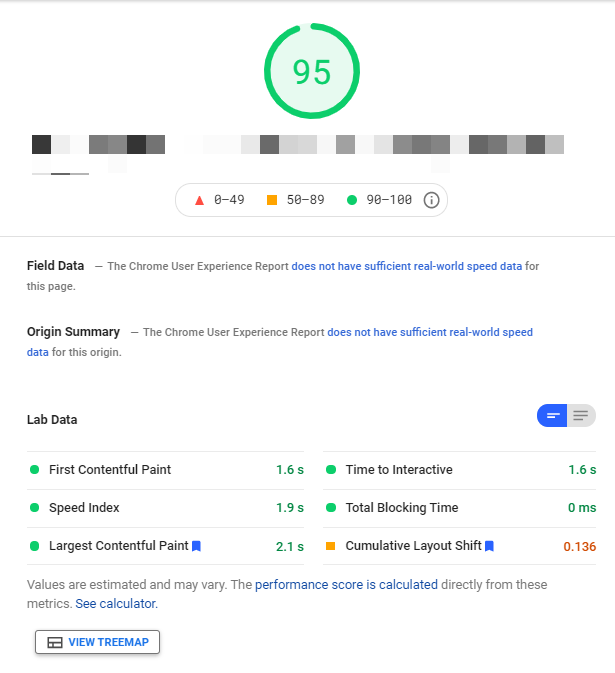
Note: the layout shift issue above was due to web fonts and would be a relatively easy fix.
In fact the only real speed optimization we did was to activate Joomla’s inbuilt caching module — which is literally a few clicks.
So with some tweaking (and the right choice of template) a site running on Joomla should be able to pass Google’s Core Web Vitals tests with flying colors.
Or in other words…
…if your Joomla site is slow, it’s probably your fault, not Joomla’s!
Bad: Lack of an all-encompassing SEO extension
At the moment we don’t feel there’s a single Joomla SEO extension that includes all the functionality we would like. Which leaves us having to install multiple extensions to fully optimize our Joomla site.
But we do have high hopes for 4SEO from Weeblr. And we’ll be keeping an eye on it as it matures with Joomla 4.
Note: if you have any suggestions for Joomla SEO extensions that we might have missed, then please let us know in the comments and we’ll take a look.
Ugly: Out-the-box many basic SEO settings are buried
If you’re not using an SEO extension like sh404SEF, it’s easy to miss basic SEO settings due to the way Joomla’s standard control panel is organized.
For example, on an article, the SEO title is buried right at the bottom of the options tab…
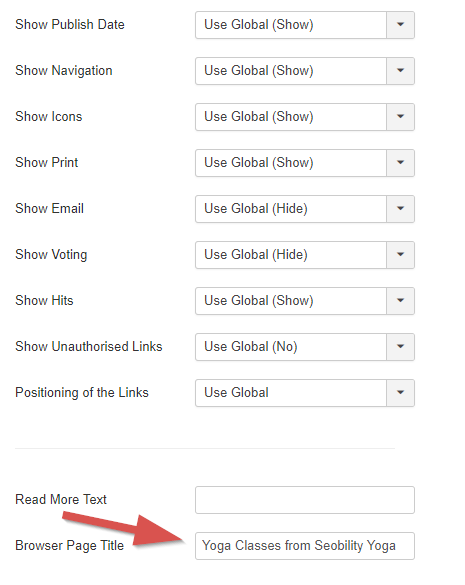
…while the meta description is located under the publishing tab.
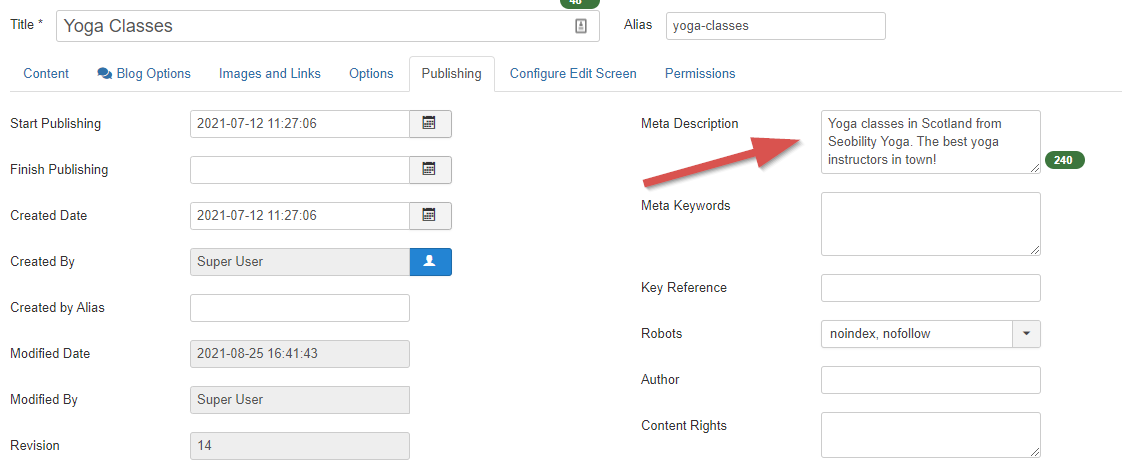
Wouldn’t it make more sense to have these in the same place?
On-Page SEO Fundamentals: How does Joomla measure up?
Now let’s turn our attention to control of some of the fundamental on-page SEO factors.
Does Joomla cover them all?
For the most part. Although visual feedback (i.e. snippet previews) and templating options are lacking, at least when using sh404SEF as your SEO extension of choice.
Here’s our summary again.

Note: having control of an SEO ranking factor is not equal to its optimization. SEO audit tools like Seobility offer advice on how to properly optimize each element, and find errors in optimization which may be holding back your site. See our SEO audit guide for more information on how to fully optimize your website.
SEO Titles and Meta Descriptions
Control in Joomla: yes
A page’s title continues to be one of the most important on-page ranking factors. And a well-written meta description can help you get more click-throughs (although Google won’t always use it).
Natively, Joomla lets you set custom SEO titles (called “Browser Page Title”) and meta descriptions for pages in the “Menu item” panel.
Menus > Your Menu > Select Article > Page Display > Browser Page Title
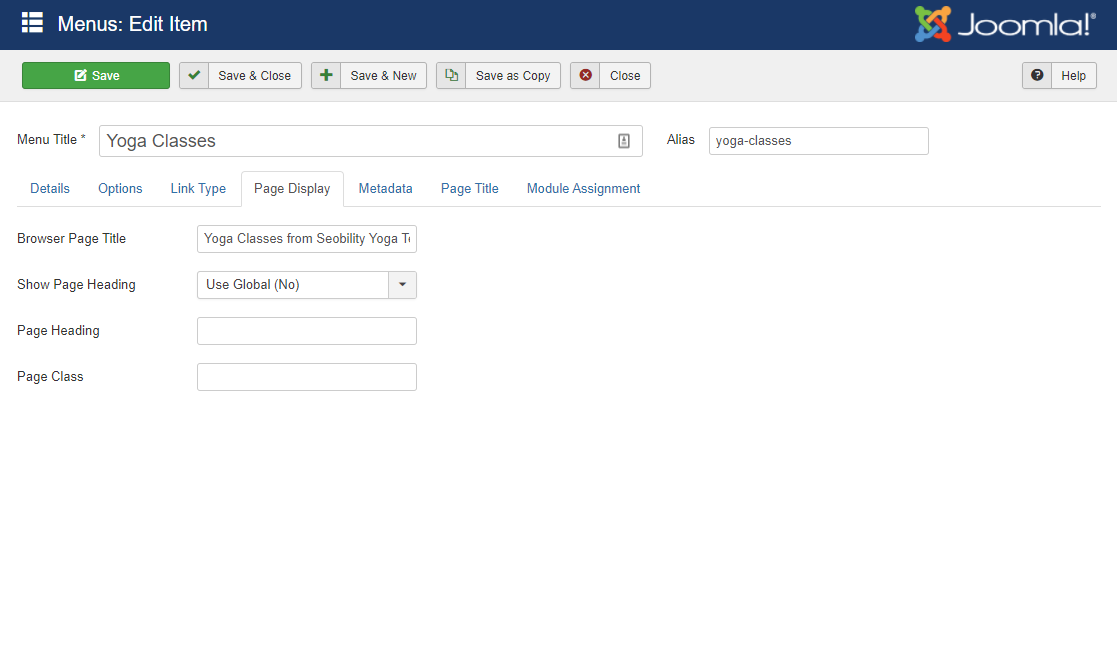
Menus > Your Menu > Select Article > Page Display > Metadata > Meta Description
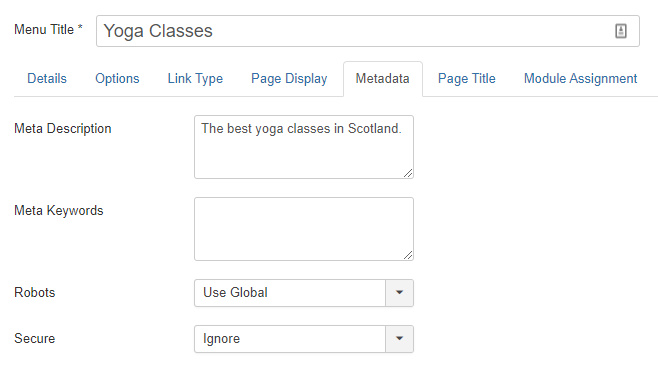
Or if you’re using sh404SEF, you can set SEO titles and descriptions (which will overwrite the native title) in the Titles and metas panel.
Components > sh404SEF > Titles and metas
You can either quickly edit titles and meta descriptions from the list screen, which is handy when you have several article titles you need to update…

…or click on a specific article for more options.
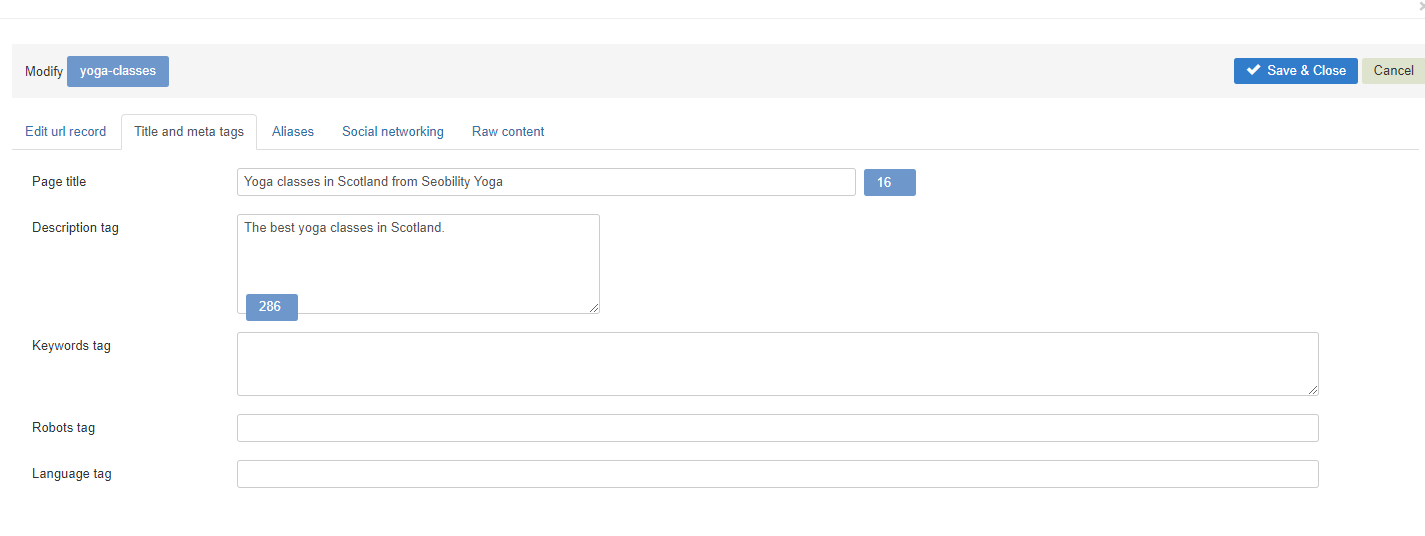
Either way, you won’t get a preview of how your snippet will look in search. So you might want to use our free snippet preview tool to test your titles and meta descriptions before editing in Joomla.
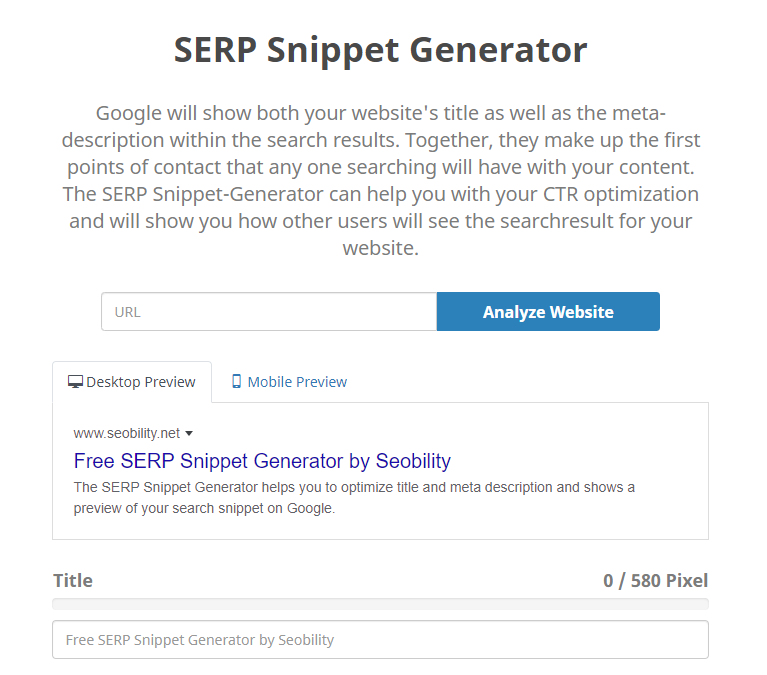
When it comes to templating titles, unfortunately there’s no easy way to do it.
You can choose to include your site name in your titles as a prefix or suffix in your site’s global configuration.
System > Global Configuration > SEO Settings
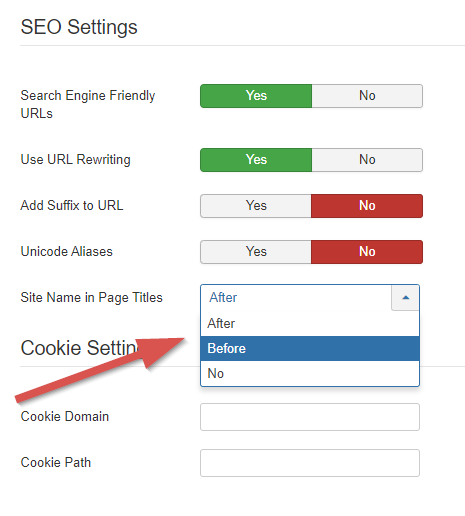
But again, this will be overwritten if you’re using sh404SEF.
And of course, if you want to write some custom code, you’re free to create a custom title (or meta description) format in your template (instructions here).
Note: natively you can also set titles/meta descriptions in the admin section of an article, which we already covered in the “good, bad, and ugly” section.
Learn more about SEO Titles and Meta Descriptions
Page slug / URL
Control in Joomla: yes
We recommend creating short, descriptive, 2-3 word slugs, including the primary keyword (or phrase) for each page. Use hyphens to separate words.
Joomla supports search engine friendly URLS natively (the process to activate them is detailed here), but we’d recommend using an extension (such as sh404SEF) for easier management.
Learn more about URL slugs/permalinks
Canonical URLs
Control in Joomla: yes
On smaller sites you probably won’t need to worry about this.
But if you have a series of similar pages on your site — i.e. targeting the same keywords, or with very small variations in content — there may be times when you’ll want to set a canonical (master) URL.
This helps to avoid duplicate content issues.
If you’re using sh404SEF, you can set a custom canonical URL in the page’s SEO panel.
Components > sh404SEF > Titles and metas > Select page > Edit url record
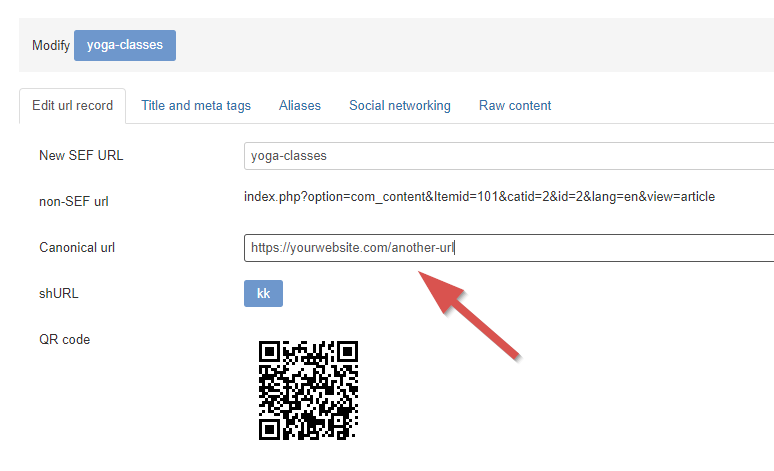
Learn more about canonical URLs
Index control (robots meta tag)
Control in Joomla: yes
The robots meta tag instructs Google to either index (1), or not to index (2) a page:
- <meta name=”robots” content=”index, follow”> – index this page please Google
- <meta name=”robots” content=”noindex, follow”> – ignore this page please Google (but follow the links on it)
You don’t actually need the first one as (assuming your page meets their quality standards) indexing is Google’s default action. But it doesn’t do any harm to have it in place.
Joomla lets you set this in the “Publishing” tab of an article’s edit screen.
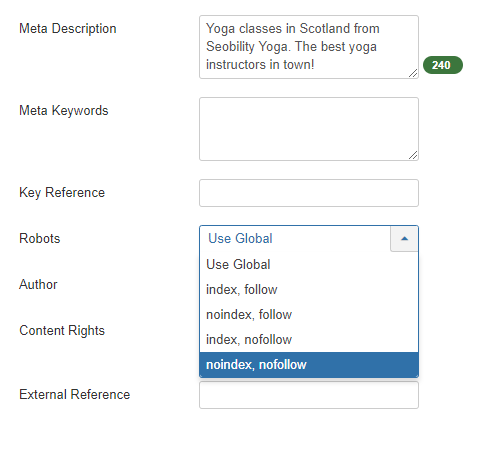
Learn more about index control
Heading Tags (h1, h2, h3 etc)
Control in Joomla: yes
Heading tags (h1, h2, h3, etc) help Google understand the structure and topic(s) of your page.
They should be properly nested.
For example, an h1 tag would generally be the main topic (level 1), an h2 could be a subtopic (level 2), and an h3 could be a sub-sub topic (level 3) etc:
<h1>Pets</h1> (topic of the page) <h2>Goldfish</h2> (subtopic) <h3>Caring for your goldfish</h3> (subtopic of goldfish) <h4>Clean your fish’s tank regularly</h4> (subtopic of caring for your goldfish) <h2>Cats</h2> (subtopic) <h3>Caring for your cat</h3> (subtopic of cats)
Joomla supports a full range of heading tags from H1-H6.
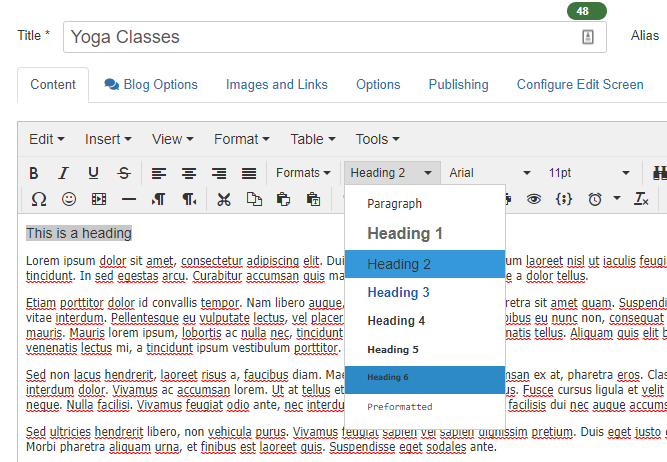
As it should!
Learn more about heading tags
Structured data (aka schema)
Control in Joomla: yes
Structured data (also known as schema) can help Google understand:
- the type of content on a page (i.e. recipe, review, product, article),
- the entity behind the website (i.e. organization),
- and can also be used to show additional search features (rich snippets)
If you’re not familiar with structured data and its impact on SEO, we recommend reading our rich snippets guide.
You’ve got several options for including custom schema on your Joomla website and pages.
First up, there are several specialized extensions, such as this one from tassos.gr (free and paid versions available).
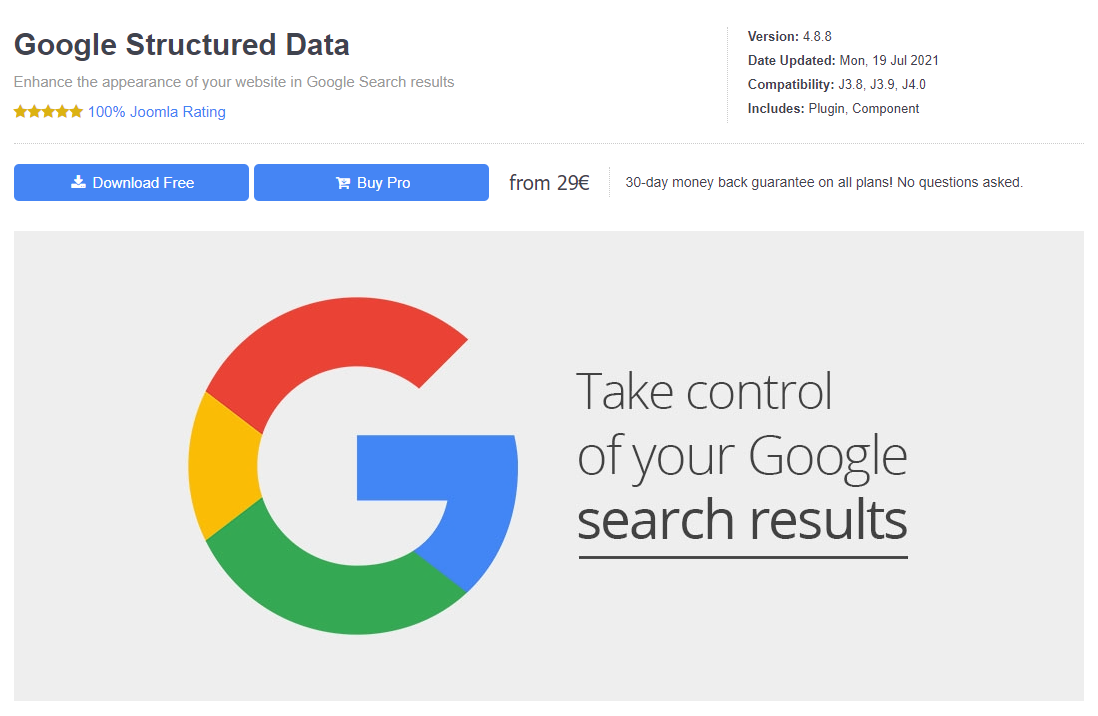
But if you want to minimize extensions, you can also generate page specific schema markup, then use sh404SEF to add it to an article.
You can use this free tool to generate a wide range of schema markup. For example, below we’ve created schema markup for an FAQ page.
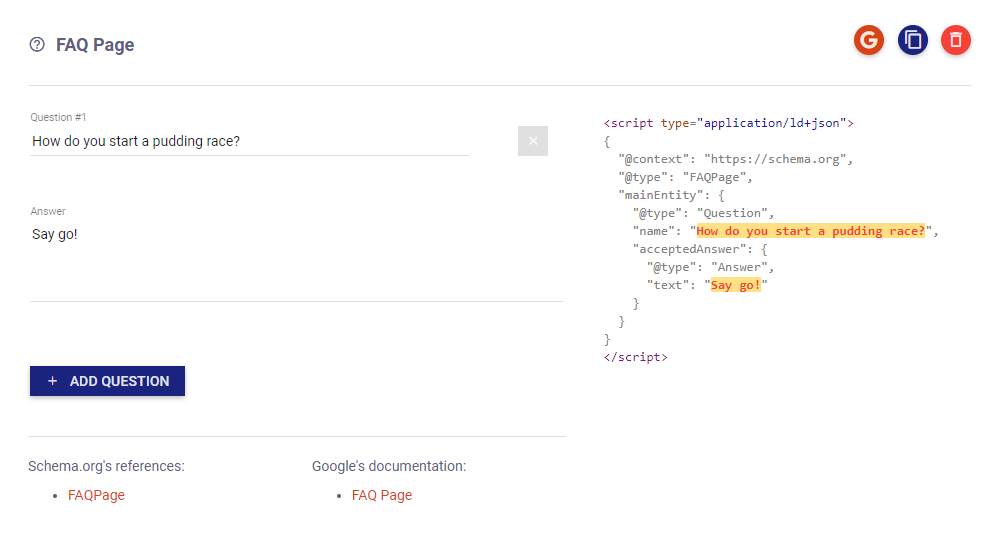
Then simply copy and paste the custom schema code into the “Bottom of HEAD SECTION” box in the sh404SEF admin panel of the page you want to include it.
Components > sh404SEF > Titles and metas > Select page > Raw content
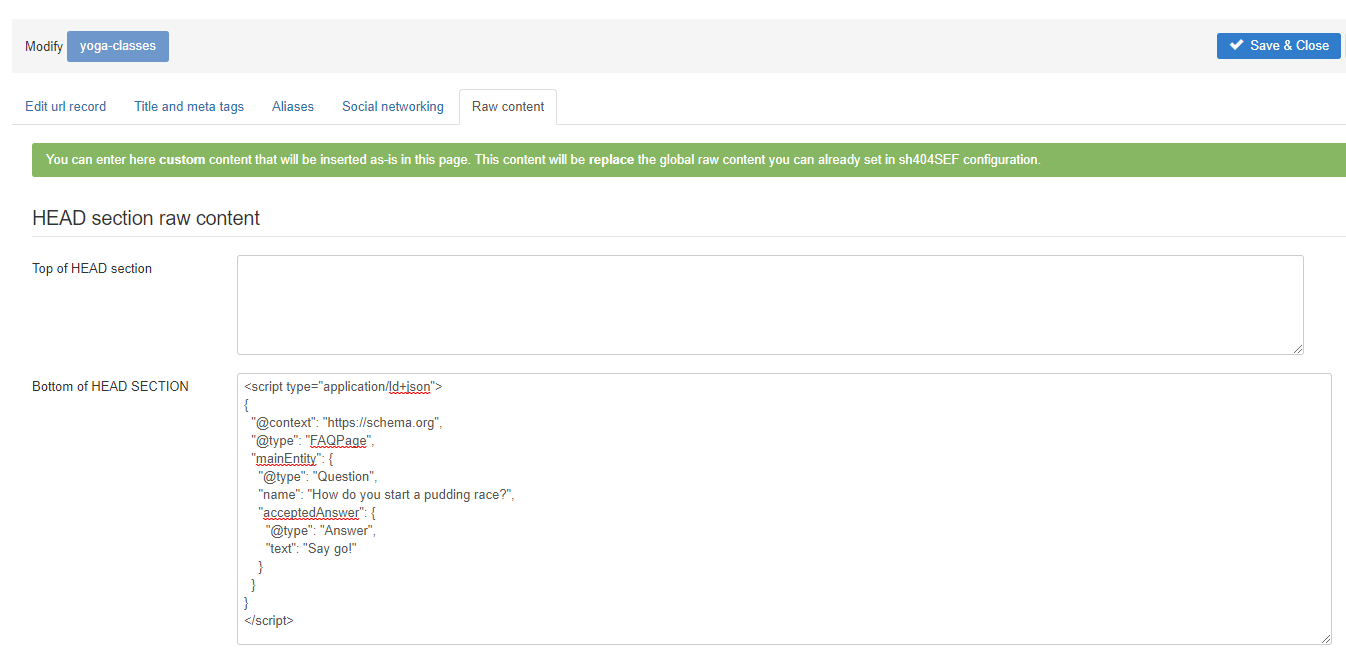
Not the cleanest solution in the world perhaps, but it does the job.
Learn more about structured data and rich snippets
Image SEO
Control in Joomla: yes
The three most important elements of image SEO are:
- Alt text (description of the image for screen readers and search engines)
- File size (smaller = faster = better)
- File name (we recommend using descriptive file names)
Joomla’s standard WYSIWYG editor supports alt text (they call it “description”)…
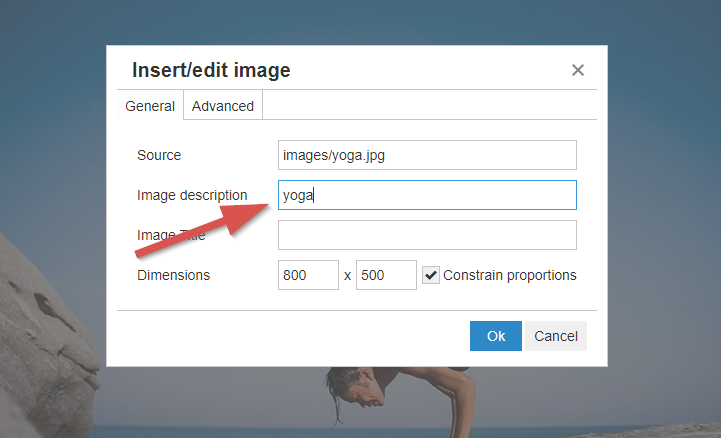
…and they won’t mess with your filenames. So as long as you use a descriptive filename when saving before uploading to Joomla, that’s what you’ll get.
With regards to optimizing image file sizes, you’ll have to handle that in a different way.
Your options are to either:
a) make sure your images are compressed before uploading, or
b) install an extension to compress your images for you
If you go for option b, then the Image Recycle extension should do the trick.
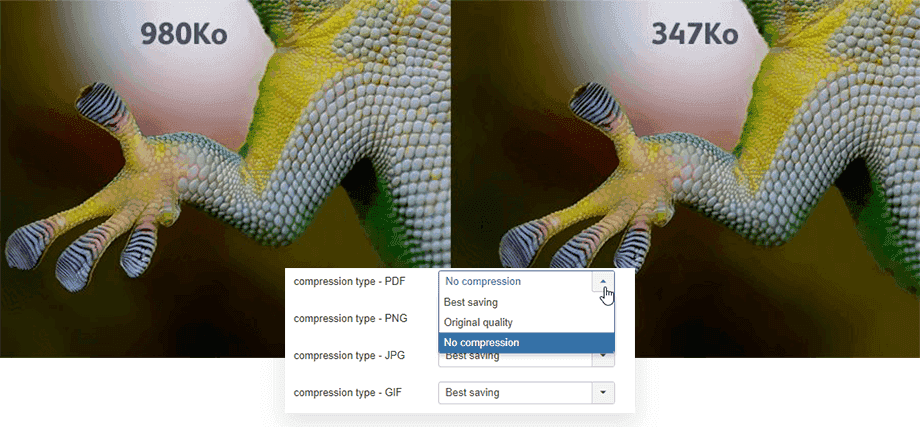
Learn more about image SEO
HTTPS
Do Joomla sites run over HTTPS? yes
HTTPS has been a confirmed Google ranking signal since 2014.
And in 2021 there’s really no excuse for any site to still be running over HTTP. Notwithstanding any SEO benefits, it’s unsecure.
Making sure your Joomla site runs over HTTPS is your (or your hosts) responsibility.
Learn more about HTTPS
Robots.txt file
Control in Joomla: yes
A robots.txt file allows you to stop search engine bots from accessing certain areas of your site.
For example, you might have a section with user-generated content that you don’t want crawled or indexed by Google.
Since Joomla is self hosted, you can use FTP to directly edit your robots.txt file.
Learn more about Robots.txt
XML Sitemaps
Generated by Joomla: yes
An XML sitemap helps Google find (and index) all the pages on your site.
You won’t get an XML sitemap natively in Joomla, but there are plenty of extensions that will help you create and manage your sitemap(s).
JSitemap (paid) is pretty comprehensive.
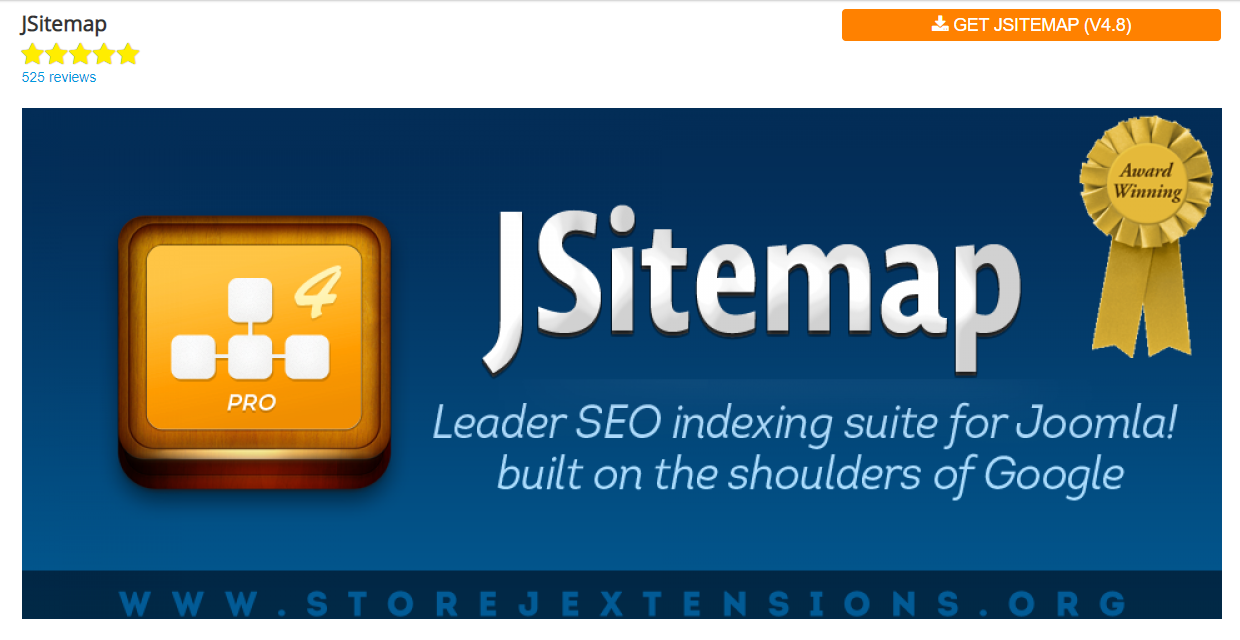
Learn more about XML Sitemaps
Are Joomla sites mobile friendly?
One word answer: yes
When designing your Joomla site there’s a good chance you’ll be focusing on how it looks on desktop.
But mobile traffic overtook desktop traffic in 2017. And Google now prioritizes the mobile version of your site for crawling and indexing.
Most Joomla templates are mobile friendly. And if yours is not…
…then it’s time to find a new one!
If Google does find any issues with the mobile version of your website, they’ll let you know in Search Console.
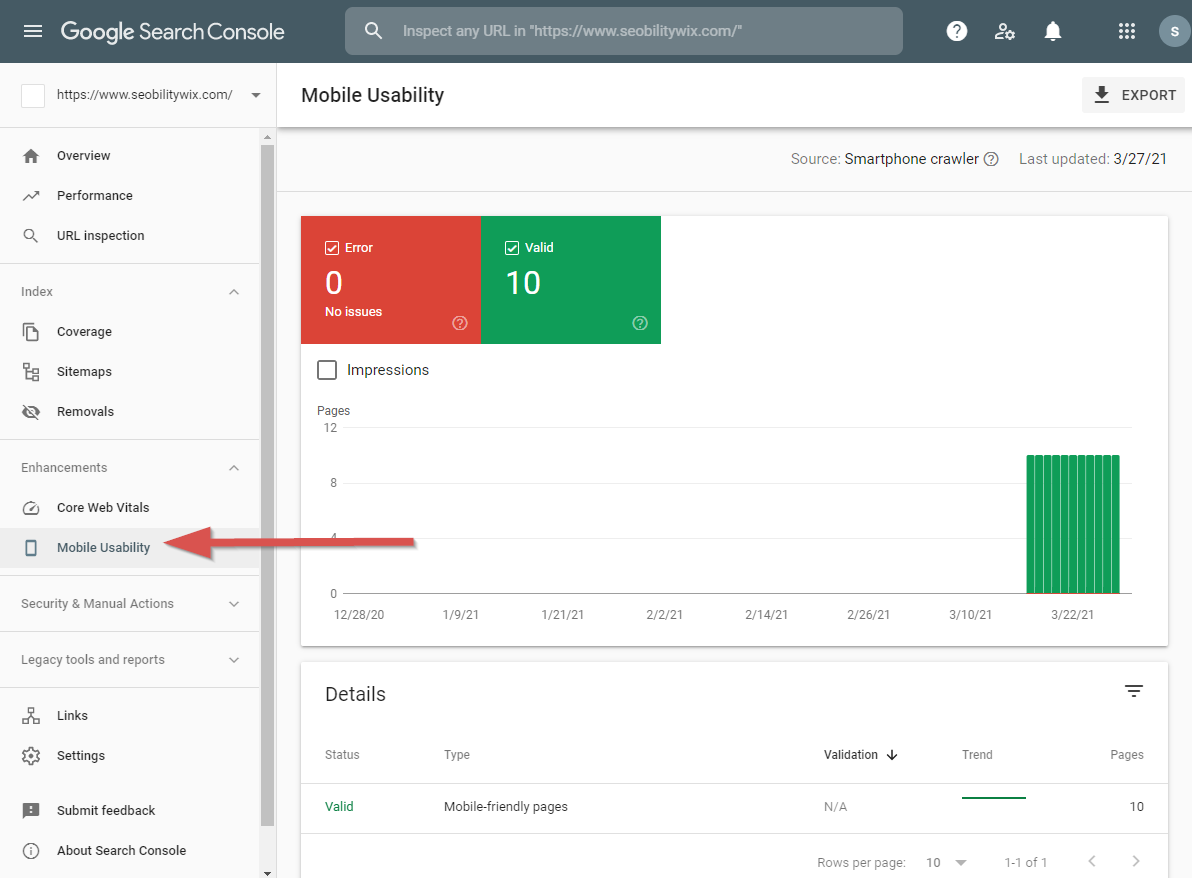
So keep an eye out.
In conclusion: Joomla is good for SEO, but feels dated
Joomla has been around for a long time, and has a relatively large community.
So it’s no real surprise that there will be a solution (be that with an extension or some code tinkering) for most technical SEO tasks that you want to complete.
But while there’s nothing you can’t do with a bit of knowledge, time, and probably money (most good extensions are paid) we do feel that many tasks are unnecessarily convoluted.
We don’t like having to install multiple extensions to get what we need done, and we would rather everything was managed in one area (i.e. you manage the metadata for an article in an article, rather than in a separate section).
And overall — as we intimated in our introductory summary — the platform just feels tired and dated to us. Joomla used to have the edge on WordPress when it came to managing multiple content types, section specific templating, and managing user privileges. But we think WordPress has now bridged that gap. Which leaves us wondering what Joomla’s current raison d’être actually is?
But ruminations over the platform’s future aside, and getting back to our focus on Joomla’s SEO capabilities, it’s definitely going to be possible to get your Joomla site fully optimized and ranking higher in Google.
So if you’re running a Joomla site, our recommendation is to:
- run a full SEO audit (you can follow this SEO audit guide),
- allocate time to fixing issues and optimizing your site (where possible),
- focus in on creating high quality content that helps your users and fully answers their search queries,
- build your site’s authority by earning high quality backlinks (check out our recommended link building tactics)
Next up we’ll be comparing the SEO pros and cons of each CMS we’ve reviewed in our series in a roundup post, where we’ll also reveal the best CMS for SEO in 2021. Sign up for our email list below to follow this series, and for loads more fresh SEO tips, tutorials, and guides straight to your inbox.
PS: Get blog updates straight to your inbox!
Source link : Seobility.net



